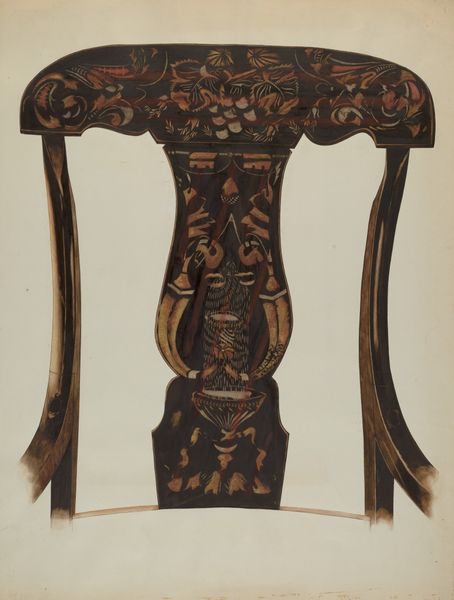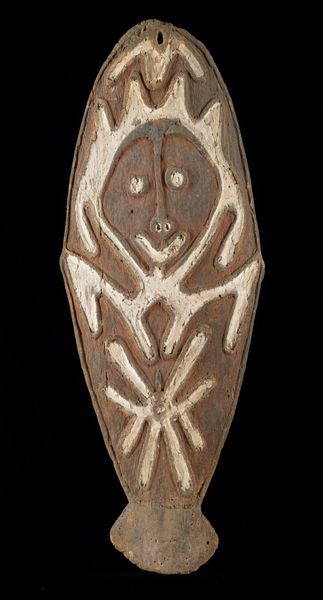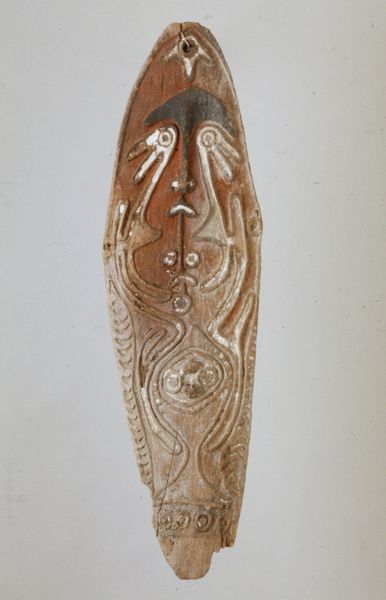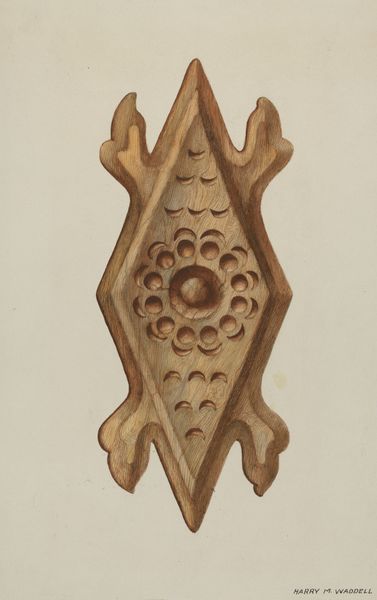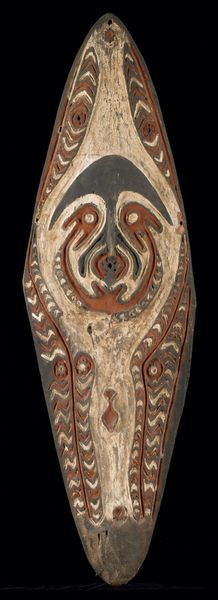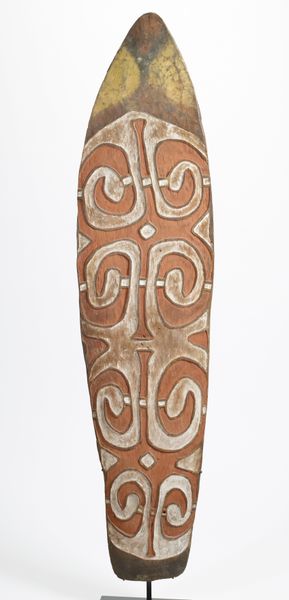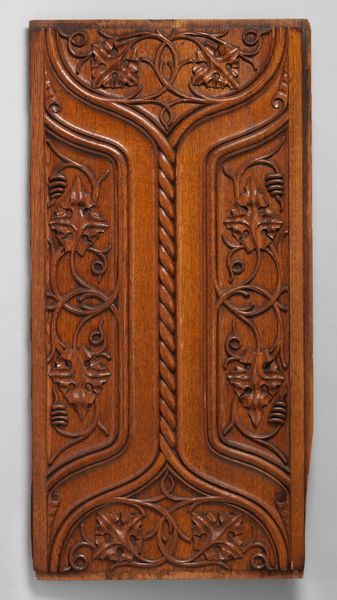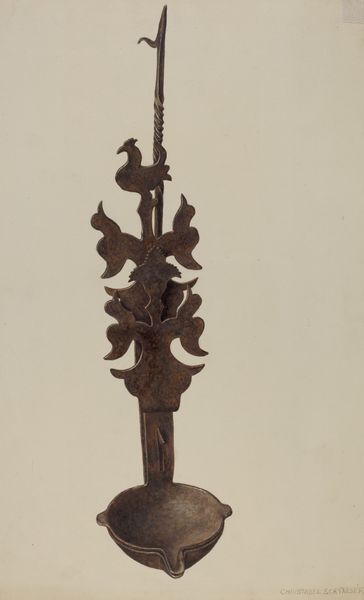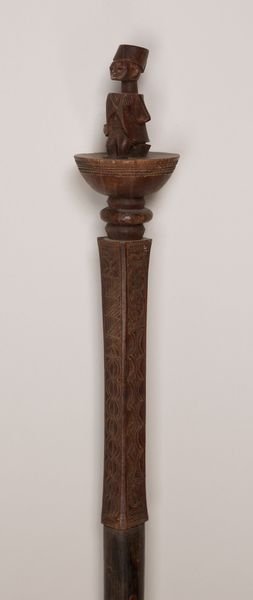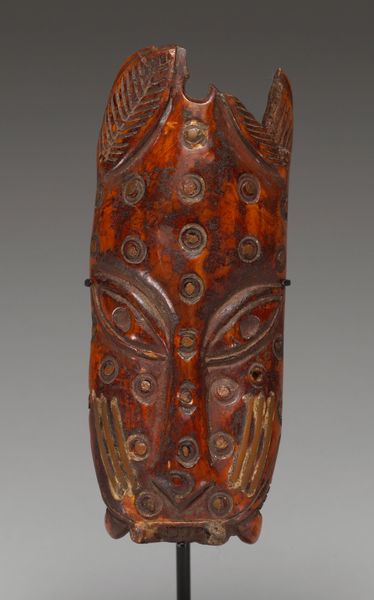
carving, relief, sculpture, wood
#
carving
#
relief
#
figuration
#
form
#
sculpture
#
ceramic
#
wood
Dimensions: 24 7/8 x 6 3/4 x 5/8 in. (63.18 x 17.15 x 1.59 cm)
Copyright: Public Domain
Editor: This is the Bioma Figure, carved in wood, from around the 20th century. It's a striking piece, and its stylized form almost reminds me of a blueprint. What can you tell me about it? Curator: This carving offers a window into the cultural context of its creation, prompting questions about gender, power, and representation within the community it originates from. Who gets to be represented, and how? Consider the stylized exaggeration of certain features in relation to the overall form. Does this tell us something about the social and political priorities embedded within this artistic tradition? Editor: So, the emphasis on particular aspects of the figure could indicate what qualities were valued? Curator: Precisely. And beyond that, how does this representation reinforce or challenge existing hierarchies? For instance, is this figure associated with a specific gender role or social class? Looking at it through an intersectional lens, we might also ask how the material itself – wood, in this case – connects to broader ecological and economic forces. How did trade or colonial structures influence artistic production and the availability of materials? Editor: I never considered the materials in that way. It’s interesting to think about how even the wood has a history. Curator: Indeed. And further, what is the gaze intended by this carving? Does it serve as a protective symbol? Is it used in specific rituals, and, if so, how do those rituals function within the larger social framework? Understanding those performative aspects adds another layer to our interpretation. Editor: It really makes you think about more than just what the figure looks like on the surface. Curator: Absolutely. Art is never created in a vacuum. By exploring these questions, we move beyond mere appreciation to a critical engagement with the complex stories these objects can tell. Editor: This makes me want to consider everything around a work, and how society and culture influence a single figure.
Comments
minneapolisinstituteofart almost 2 years ago
⋮
Bioma are spirit figures that were part of large presentations of objects in men's ceremonial houses, which included skulls of ancestors, enemies, crocodiles and pigs, as well as other objects. The energetic and symmetrical silhouette carved in low relief on one side of a red and white painted board is typical of bioma design. The legs are bowed to fit over one of the skulls on display.
Join the conversation
Join millions of artists and users on Artera today and experience the ultimate creative platform.

